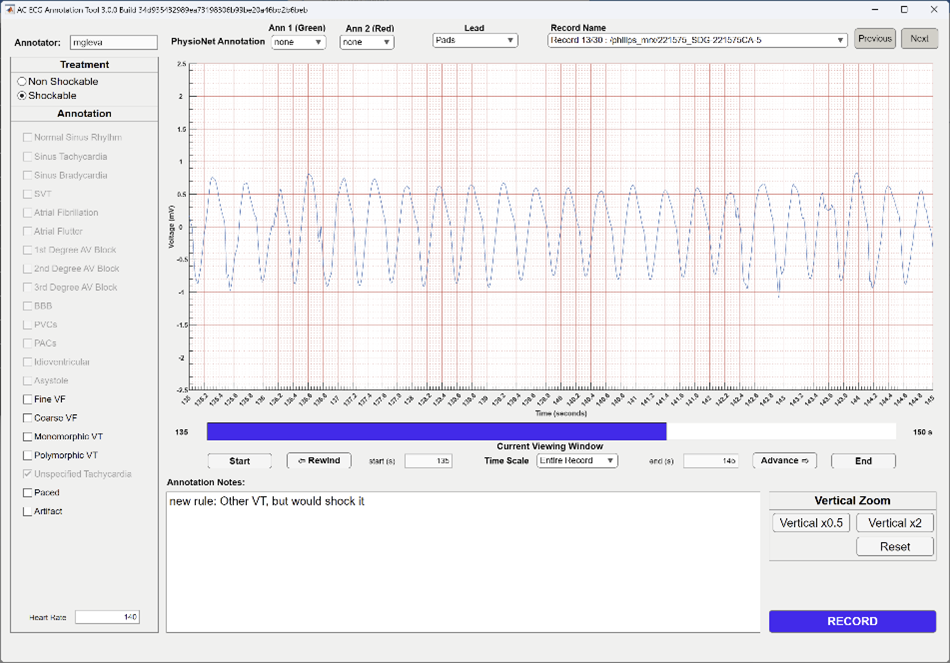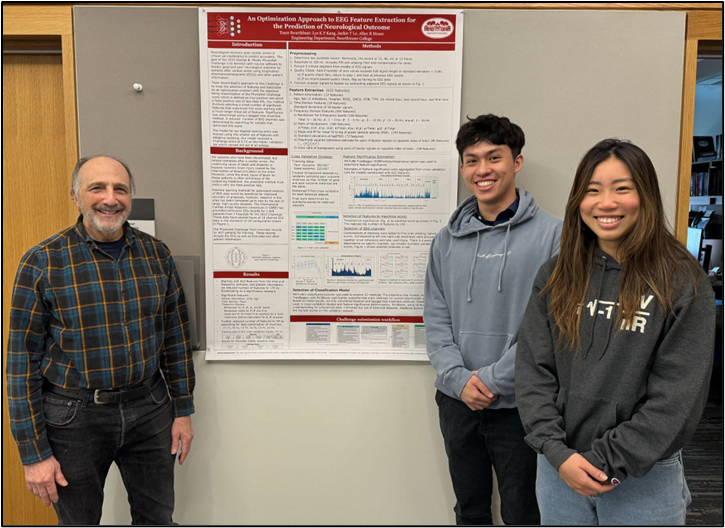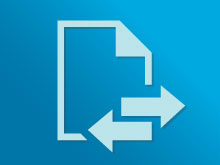Startup Spotlight: Defibrio and Andrews Cooper Partner to Engineer the First Smartphone-Powered AED
Sudden Cardiac Arrest (SCA) kills hundreds of thousands of people every year, “more than colorectal cancer, breast cancer, prostate cancer, influenza, pneumonia, auto accidents, HIV, firearms, and house fires combined,” according to the American Heart Association’s 2013 report. Cardiac arrest occurs when the heart suddenly stops beating, resulting in the stoppage of blood pumping to the brain and vital organs. Seconds matter for survival to restore a normal heart rhythm.
Despite efforts to improve survival rates through the distribution of automated external defibrillators (AEDs) in public spaces like gyms, offices, or airplanes, there has been little improvement in the resuscitation rates for out-of-hospital cardiac arrest (OHCA). A startup company, Defibrio, aims to change this.
A lifesaving idea in your hand
The founding trio of Defibrio wanted to explore how the ubiquity of smartphones could be used to save more lives of people who experience sudden cardiac arrest. Equipped with the perfect combination of skills, one a technologist, one a businessman, and one an emergency room medical doctor, they set out to put lifesaving technology within arm’s reach of everyone.
Their product, the Defibrio AED, is the first of its kind – an AED powered by a smartphone. Josh Hale, Chief Product Officer at Defibrio, explains, “The use of a smartphone as the brains and power of an AED presents significant potential with regard to ease of use, cost, and maintenance compared to current AED solutions.”

The Defibrio AED uses an app and the power of your smartphone to deliver a therapeutic shock to treat sudden cardiac arrest (Image courtesy of Defibrio)
Traditional AEDs can be expensive, large, and unfamiliar to most laypeople. The Defibrio team wanted to design their technology for the everyday person. Most people are comfortable with using an app interface on their phone, making it easier to instruct the user through the app-based platform in an emergency. Along the same lines, the AED relies on the Defibrio app to deliver built-in notifications to test the device and replace the pads on a pre-determined schedule, taking out the forgetfulness of regular maintenance and battery replacement of existing AEDs. A novel aspect is that the power source is the smartphone battery itself – the AED does not have its own battery, as the phone battery has plenty of power to deliver multiple shocks. Finally, to keep the device readily available to people, the founding team centered on the idea of an app for a much lower cost of entry.
The Defibrio AED – making AEDs more accessible
The Defibrio AED system is composed of three parts: a smartphone app, an AED module, and a small device that comes with a USB-C connection and electrode pads attached to the AED module that can be applied to the patient’s chest.
During a cardiac arrest emergency, the user simply connects the module to their phone via USB-C. The Defibrio app will open automatically, contact emergency services, and guide the user with step-by-step instructions to apply the pads to the patient’s chest. The app analyzes the patient’s heart rhythm and delivers a shock (if warranted) to revive the patient. In addition, the app gives CPR instructions and records data that can be shared with medical professionals.

The Defibrio AED is connected to a smartphone and electrode pads are placed onto a patient (Image courtesy of Defibrio)
At a technical level, the Defibrio app manages a multitude of activities during an emergency. Once connected, the app sends commands to the AED module to quickly test that all components are ready to be used. The AED is signaled to begin charging, powered by the smartphone, in the event a shock should be delivered. When the user indicates that the electrode pads are applied to the patient, the app initiates an analysis of the patient’s heart, including receiving the ECG data from the electrode pads, filtering noise out of the signal, and running the data through an algorithm that classifies the type of rhythm and whether it can be treated with a shock. These behind-the-scenes processes, along with finding a way to design the hardware elements in a small, portable form factor, are the core of the engineering focus that Defibrio had to develop.
Partnering for market success
Like many startups tackling ambitious ideas, Defibrio faced challenges in finding the right teams to execute on its vision. They worried that the time it might take to get up and running with a capable team could mean significant delays to the overall program schedule. Leveraging strong networks in Boston, they were able to connect with expert partners who could help bring their idea, a Class III medical device, to market.
“Our philosophy has been to blend our strengths in overall business management and product leadership with third-party skills to develop and deliver the product,” Hale explains, “it was obvious that Andrews Cooper was able to bring to the table a host of experiences that were complementary to Defibrio’s mission.” Andrews Cooper (AC), an engineering services firm specializing in highly complex technology development, has been a core partner from the beginning of the venture.

Engineers from Andrews Cooper work on the Defibrio prototype (Images courtesy of Andrews Cooper)
AC played a crucial role in building the original proof of concept to illustrate that the AED’s fundamental capabilities of working with a smartphone were possible. Hale commends the partnership, “AC has not only led the way on our hardware design, but they have also driven all of our firmware development and were instrumental in the development of our custom rhythm recognition algorithm that runs in the Defibrio app.” Beyond the dedicated groups at AC working to help Defibrio meet critical development goals, they support the startup in identifying partners for new phases of development, such as a contract manufacturer to build the AED, and communication with stakeholders.
Engineering the algorithm with MATLAB
By working with AC, Defibrio was able to access specialized engineering expertise without the delays and overhead of building an in-house team from scratch. A key part of the engineering workflow centered on developing and validating a rhythm recognition algorithm.
The team used MATLAB App Designer to build a custom annotation tool, used by clinicians to tag heart rhythms in a database as shockable or not shockable. This process involved pre-labeling rhythms by residents, a formal review by physicians, and an adjudication step to resolve diagnosis differences. This human-annotated database provided the backbone for assessing the next phase of an engineered algorithm against.

ECG annotation tool using MATLAB App Designer (Image courtesy of Andrews Cooper)
The second phase focused on the development of the recognition algorithms. Engineers used MATLAB to hypothesize a signal processing method to enhance characteristics of the ECG wave that would reliably separate the various heart conditions between those that should be shocked and those that should not be shocked. Large databases of ECG waves were analyzed and plotted to test how effective the signal processing method was at separating out the various heart conditions. The team could then compare human judgment against algorithm judgment to determine if the Defibrio AED was successfully able to identify rhythms as shockable vs. not shockable.
In parallel with the development of the MATLAB modules, the algorithm was implemented in C++ for deployment in the final product. By running these versions side by side, the team can spot discrepancies and fix errors early, reducing defects and speeding up development.
Leveraging MathWorks tools to focus on innovation
The adoption of MathWorks tools played a pivotal role in accelerating Defibrio’s algorithm development process. “The beauty of MATLAB is the speed and efficiency with which one can test an algorithm concept and thereby iterate on various concepts,” says Hale. MATLAB’s language structure with math constructs that allow for easy manipulation and computation of arrays, combined with a rich capability of plotting results, noticeably sped up their algorithm development.
Data integration was also a critical factor in Defibrio’s workflow. The team needed to consolidate rhythm data from multiple sources to build a robust training and testing foundation for their AED’s recognition algorithm. MathWorks tools offered confidence in the ability to interface with a variety of data formats and sources.
“Developing new algorithms with MATLAB dramatically helped to reduce our total R&D cost and the time to market.” – Josh Hale, Defibrio
For the team comprised of engineers with diverse backgrounds and areas of expertise, having a unified set of familiar tools minimized onboarding time and facilitated seamless communication in comparison to open-source alternatives.
Access to MathWorks Startup Suites enabled the team to focus on the technical challenges of innovation, rather than the logistics of tool integration or data handling, supporting a more efficient and cohesive development cycle.
Healthcare in everyone’s pocket
Breaking from the traditional with a new form of technology can be difficult, both in developing the product itself and successfully bringing it to buyers. Making a new medical device comes with a particular set of challenges, including understanding regulatory requirements, embedding a quality system and its processes into the development workflow, and coordinating test activities across disparate teams. To mitigate risk, Defibrio focused on finding experienced, capable partners like AC and prioritizing structured meetings and processes to facilitate communication across the project.
Reflecting on advice he would share with other founders, Hale concludes, “Building something new is bound to attract both passionate support and ardent skepticism. We use the support to our advantage and try to learn from the skepticism, but also not let it slow us down.” The team has certainly not let any skepticism halt their passion for bringing life-saving technology to everyone. Defibrio is focused on its next major milestone – finalizing development and obtaining regulatory approval for commercial distribution and sale of the device.
With a smartphone-powered AED, Defibrio hopes to make a real difference in saving the lives of sudden cardiac arrest patients, one pocket at a time.
Learn more about Defibrio: https://defibrio.com/
Learn more about Andrews Cooper: https://www.andrews-cooper.com/
Learn more about MathWorks Startup Program: https://www.mathworks.com/products/startups.html









评论
要发表评论,请点击 此处 登录到您的 MathWorks 帐户或创建一个新帐户。